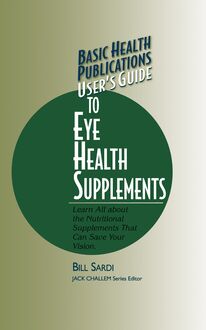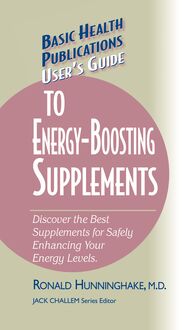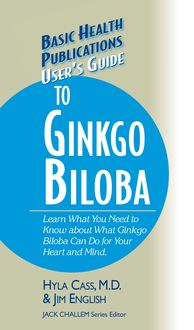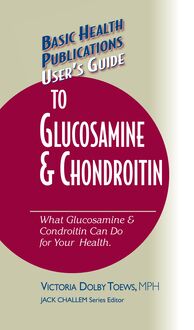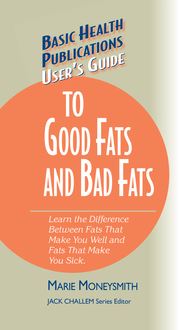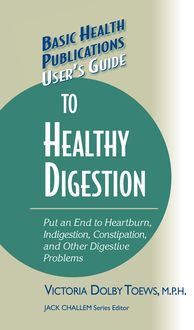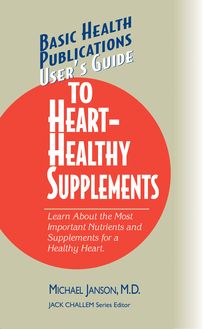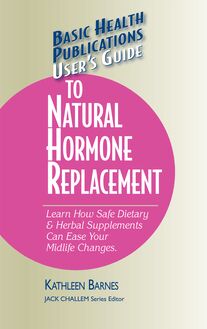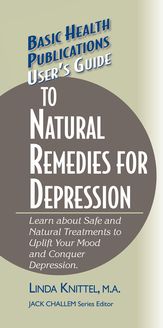-
 Univers
Univers
-
 Ebooks
Ebooks
-
 Livres audio
Livres audio
-
 Presse
Presse
-
 Podcasts
Podcasts
-
 BD
BD
-
 Documents
Documents
-
- Cours
- Révisions
- Ressources pédagogiques
- Sciences de l’éducation
- Manuels scolaires
- Langues
- Travaux de classe
- Annales de BEP
- Etudes supérieures
- Maternelle et primaire
- Fiches de lecture
- Orientation scolaire
- Méthodologie
- Corrigés de devoir
- Annales d’examens et concours
- Annales du bac
- Annales du brevet
- Rapports de stage
La lecture à portée de main
Vous pourrez modifier la taille du texte de cet ouvrage
Découvre YouScribe en t'inscrivant gratuitement
Je m'inscrisUser's Guide to Inflammation, Arthritis, and Aging , livre ebook
Découvre YouScribe en t'inscrivant gratuitement
Je m'inscrisEn savoir plus
Vous pourrez modifier la taille du texte de cet ouvrage
En savoir plus

Description
Sujets
Informations
| Publié par | Turner Publishing Company |
| Date de parution | 15 juillet 2005 |
| Nombre de lectures | 0 |
| EAN13 | 9781591206842 |
| Langue | English |
Informations légales : prix de location à la page 0,0400€. Cette information est donnée uniquement à titre indicatif conformément à la législation en vigueur.
Extrait
The information contained in this book is based upon the research and personal and professional experiences of the author. It is not intended as a substitute for consulting with your physician or other healthcare provider. Any attempt to diagnose and treat an illness should be done under the direction of a healthcare professional.
The publisher does not advocate the use of any particular healthcare protocol but believes the information in this book should be available to the public. The publisher and author are not responsible for any adverse effects or consequences resulting from the use of the suggestions, preparations, or procedures discussed in this book. Should the reader have any questions concerning the appropriateness of any procedures or preparations mentioned, the author and the publisher strongly suggest consulting a professional healthcare advisor.
Series Editor: Jack Challem
Editor: Susan Andrews
Typesetter: Gary A. Rosenberg
Series Cover Designer: Mike Stromberg
Basic Health Publications User’s Guides are published by Basic Health Publications, Inc.
28812 Top of the World Drive
Laguna Beach, CA 92651
949-715-7327 • www.basichealthpub.com
Copyright © 2005 Ronald E. Hunninghake, M.D.
ISBN: 978-1-59120-684-2
All rights reserved. No part of this publication may be reproduced, stored in a retrieval system, or transmitted, in any form or by any means, electronic, mechanical, photocopying, recording, or otherwise, without the prior written consent of the copyright owner.
Printed in the United States of America
10 9 8 7 6 5 4 3 2
C ONTENTS
Introduction
1. Good and Bad Inflammation
2. Inflammatory Triggers
3. Biologic Regulators
4. Balance Factors
5. Pro-inflammatory Dietary Shifts
6. Mouth/Heart Inflammation
7. Gut/Joint Inflammation
8. Our Ancestral Diet
9. Balancing Inflammation
10. InflamAging
Conclusion
Selected References
Other Books and Resources
I NTRODUCTION
A re you in pain? Do you wake up stiff and tired each morning? Has your weight been creeping up in spite of your best efforts to control it? Is your doctor concerned about your cholesterol and blood pressure? Has a gnawing sense of depression been creeping into your life? Do you come from a family with arthritis or heart disease in its background?
If you find yourself answering “Yes” to many of these questions, there is hope. This health guide offers a new understanding that can help you overcome the symptoms of “bad” inflammation naturally. (A more complete list of questions is available in the “Bad” Inflammation Inventory at the end of Chapter 1 .)
Most of us are familiar with acute inflammation: the redness and swelling that accompanies any painful injury or infection. We all get hurt from time to time. It’s not unusual to get sick. We expect to heal.
But what if healing eludes us? What if pain persists or infection revisits us all too often? What if this protective system we once depended on now erodes our joints, plugs our arteries, and hurries our process of aging?
For the human species to survive, it had to have a competent inflammatory healing system. Otherwise injury and infection would have devastated our ancestors, given their primitive living conditions. Instead, experts have found the remains of early humans to be surprisingly free of disease. Something about the way they lived kept their inflammatory healing system sound.
Not so in modern America. Although we live longer than our ancestors, we do not live better. We are overweight, tired, and diabetic. Heart disease, rare in the nineteenth century, has now become our number-one killer. Our digestive systems are inflamed (acid blockers are the number-one selling drugs on the planet). Our joints hurt (more than 70 million Americans). We are fraught with allergies and asthma (56 million). Osteoporosis, macular degeneration, hepatitis, and hundreds of chronic “-itis” diseases plague us. We may be both the wealthiest and sickest society in history!
These chronic illnesses have a common denominator: inflammation! Not the healing kind mentioned earlier. This inflammation is “bad”! This is chronic inflammation , the kind that damages as it lingers. The “good” inflammation that helped our ancestors survive has turned “bad.” This is why you hurt, why you are tired, and why you are at risk for silent diseases of aging.
This health guide will not only explore the why of this, but a very important how: how to heal your inflammatory system. You can overcome chronic inflammatory illness without resorting to costly anti-inflammatory medications with potentially life-threatening side effects.
You will learn what triggers “bad” inflammation, what regulates it, what balance factors you might be missing, and how dietary shifts have created it. Case studies will illustrate how implementing this new understanding can solve serious illness. You will rediscover our ancestral diet as well as five pathways to better health and slowed aging.
This health guide is based upon twenty-five years of caring for patients in a way that fostered their growth into colearners —that is, people who actively participate in their own healing. The colearner concept originated with the late Dr. Hugh Riordan, founder of the Center for the Improvement of Human Functioning International in Wichita, Kansas (also known as the Brightspot for Health, whose web address is www.brightspot.org ). Practicing at this wonderful center under the direct tutelage of Dr. Riordan, I learned how to develop a caring, therapeutic relationship with my patients. As their preceptor, I asked them to become more involved in the detective work of discovering the underlying causes of their illnesses. Colearners assume responsibility for their health and well-being—and then go make it happen!
You can be a colearner too, and overcome the “bad” inflammation in your life. Inflammation, Arthritis, and Aging can serve as your guidebook.
CHAPTER 1
G OOD AND B AD I NFLAMMATION
R emember the last time you cut yourself? Through a step-by-step process of recognition, response, and repair, your body proceeded to demonstrate its remarkable ability to heal.
Long ago ancient physicians studied this phenomenon of healing. They observed that the injury site appeared to get worse before it got better. Injuries became inflamed, then proceeded to heal.
As far back as the first century A.D. , Celsus enumerated the four cardinal signs of inflammation: swelling, redness, heat , and pain. A century later, loss of function was added as the fifth key sign of inflammation.
These descriptive terms helped ancient physicians to identify inflammation. But it took the invention of the microscope to help modern physicians understand inflammation.
The Biology of Acute Inflammation
The five signs of inflammation are the visible manifestation of the body’s highly orchestrated response to injury. Hidden from sight, five microscopic steps comprise the biology of acute inflammation:
• Step 1—Trigger: Bacteria that inhabit the skin or the object that broke the skin immediately invade the wound. Injury and the threat of infection trigger the inflammatory system.
• Step 2—Activate: Special messenger chemicals called cytokines are activated and released into the bloodstream.
• Step 3—Mobilize: The cytokines mobilize and direct germ-fighting white blood cells to the injury site. The cytokines also loosen the junctions between the cells that comprise the blood vessel’s wall.
• Step 4—Eradicate: The white cells migrate out into the arena of damaged tissue where the germs are methodically engulfed and eradicated through a process called phagocytosis. Damaged cellular debris is then cleaned up with powerful enzymes that are released from the white cells.
• Step 5—Repair: Finally, repair and growth chemicals from fibroblasts coordinate the replacement of damaged cells with scar tissue.
Cytokine
A cell-communication molecule that regulates inflammatory activities.
The word acute conveys a time frame that means “immediate.” Acute care means care that is given right away. The body’s inflammatory system treats the trigger threat as an immediate priority. Thanks to acute inflammation an infection is usually prevented, the wound is cleaned up, new cells are laid down, healthy scar formation occurs, and the body is returned to nearly 100 percent functionality.
Chronic Inflammation
But what about joint-destructive rheumatoid arthritis, those annoying seasonal allergies, the soaring rates of asthma, sports injuries that refuse to heal, decades-long dermatitis, unrelenting and sometimes bloody colitis, chronic sinusitis, and the insidious liver destruction of hepatitis C?
These are examples of conditions caused by chronic inflammation. Chronic is the opposite of acute. Acute gets right on the job—and gets it done! Chronic means that the job is prolonged and drawn out, often with adverse consequences. Healing is delayed and the imbalance responsible for the delay results in mounting injury.
In chronic inflammation, one or more inflammatory triggers will not go away. Either the irritant is entrenched like an environmental chemical exposure; or there is something repetitive involved, such as overuse injuries as occur in athletes or industrial workers; or perhaps a low-grade infection is smoldering somewhere in the body.
Such a chronic trigger puts the inflammatory system on perpetual activation. Excessive cytokines are generated day after day. More and more white cells are mobilized to the trigger site. An exaggerated effort to eradicate the unresolved trigger results in an ongoing release of an excess of tissue-damaging enzymes.
Surrounding tissues become innocently involved in free-radical damage that can trigger even more cytokine activation. In an ongoing effort to heal the inflamed area, repair chemicals accumulate in excess. Overexuberant scar formation clinically appears as granulation ti
-
 Univers
Univers
-
 Ebooks
Ebooks
-
 Livres audio
Livres audio
-
 Presse
Presse
-
 Podcasts
Podcasts
-
 BD
BD
-
 Documents
Documents
-
Jeunesse
-
Littérature
-
Ressources professionnelles
-
Santé et bien-être
-
Savoirs
-
Education
-
Loisirs et hobbies
-
Art, musique et cinéma
-
Actualité et débat de société
-
Jeunesse
-
Littérature
-
Ressources professionnelles
-
Santé et bien-être
-
Savoirs
-
Education
-
Loisirs et hobbies
-
Art, musique et cinéma
-
Actualité et débat de société
-
Actualités
-
Lifestyle
-
Presse jeunesse
-
Presse professionnelle
-
Pratique
-
Presse sportive
-
Presse internationale
-
Culture & Médias
-
Action et Aventures
-
Science-fiction et Fantasy
-
Société
-
Jeunesse
-
Littérature
-
Ressources professionnelles
-
Santé et bien-être
-
Savoirs
-
Education
-
Loisirs et hobbies
-
Art, musique et cinéma
-
Actualité et débat de société
- Cours
- Révisions
- Ressources pédagogiques
- Sciences de l’éducation
- Manuels scolaires
- Langues
- Travaux de classe
- Annales de BEP
- Etudes supérieures
- Maternelle et primaire
- Fiches de lecture
- Orientation scolaire
- Méthodologie
- Corrigés de devoir
- Annales d’examens et concours
- Annales du bac
- Annales du brevet
- Rapports de stage

